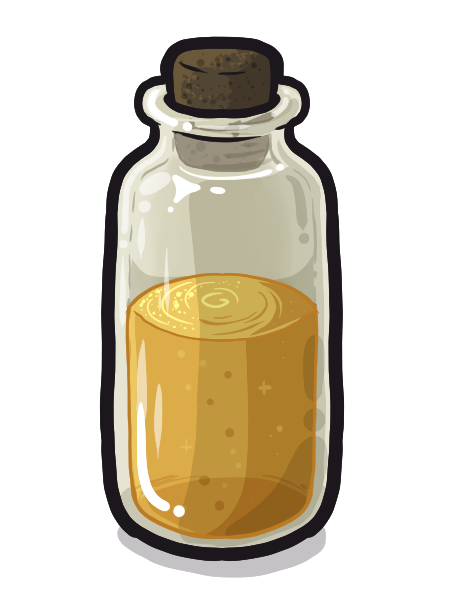Iakine (ee-ah-kEEn)
The tears of monoliths.
Iakine is a Luminous element, and reacts to Aura instead of thermal energy. It does not bind to any non-Luminous elements in nature, but is capable of binding with kaalite or edylium to create iakine kaalide and iakine edylide, respectively. Iakine is only found in monoliths.
Properties
Material Characteristics
Iakine has an iridescent sheen and is almost always glowing. Its color depends on its luminosity, with hot variants of iakine appearing as yellow and cold variants appearing as cyan. Iakine sometimes appears pure white if it is glowing brightly enough.
It varies in viscosity depending on how much Aura it is holding. The iakine/kaalite compound that weeps out of monoliths is usually very thick and slow moving, like honey. It is very slippery and nothing sticks to it. It will bead up into little droplets if left on a surface. It is less dense than water and will collect on the surface if poured in.
Physical & Chemical Properties
As a Luminous element, iakine absorbs trace amounts of thermal energy but does not change state with it. It changes states in response to Celestial Aura instead. Iakine can have a cold or hot luminosity, which determines the type of Aura it responds to.
It has the lowest melting point of the Luminous elements and will turn into a liquid by just sitting under the sky for long enough. Its boiling point is still too high for it to be common in nature, though it is possible there are rare exceptions.
Compounds
Origin & Source
Iakine is only found in monoliths. Pure iakine is only found in liquid form at the center of monoliths. A compound of iakine and kaalite coats the outside of monoliths, and is the only location where solid--or mostly solid--iakine is naturally found.
There is a possibility of gaseous iakine existing in certain areas of extremely high Aura activity, but that theory has not been confirmed.
History & Usage
Discovery
Iakine was the first Luminous element to be identified as something other than kaalite.
Cultural Significance and Usage
As the purest form of Luminous element, iakine is often used to represent purity. Its refusal to mix with anything other than itself or other Luminous elements is used to signify resisting corruption.
Iakine is sometimes depicted as synonymous with edylium, because of its liquid state. A common nickname for iakine is "The Tears of the Earth", due to the way it "weeps" out of monoliths from time to time. Those that worship monoliths might revere it as the tears or blood of their gods.
Now that Auratech is gaining popularity, the perception of iakine is shifting from reverent to scientific, much to the dismay of many devout spirtualists.
Industrial Use
Iakine has near limitless applications in Auratech. Its purity and reactivity outmatches the other Luminous elements by a long shot. Its refusal to mix with non-Luminous materials means that no non-Luminous alloys can be made with it, but that also means its impossible to contaminate it and dull its effectiveness.
Iakine is the best Luminous element to use in Aura batteries. Though no iakine battery yet matches the effectiveness of a celestial core, they can get far closer than a battery made of kaalite.

Related Elements
KaaliteEdylium


The description of its abilities to manipulate temperature and energy is intriguing and adds an interesting element to the world-building in this universe. You might include of potential dangers or limitations or drawbacks to add depth and complexity to the material.